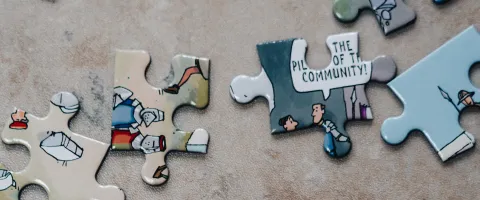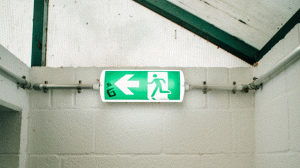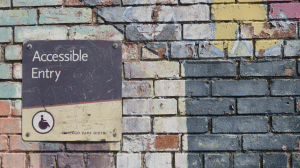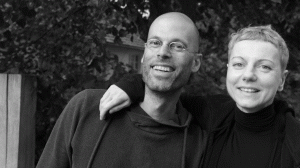In this article, we’ll first define Workplace Community Building and Diversity and Inclusion. Then we’ll explain how they link together and why every organization needs to get up to speed with rethinking Diversity and Inclusion through community building in the workplace. We’ll end with five ways to build workplace community so that you can assess your own team/workplace and identify where there’s room for improvement!
Workplace community building is intrinsically linked with Diversity and Inclusion and when both are prioritized it leads to a thriving workplace culture that fosters a sense of belonging for all.
Workplace community-building is an emerging workplace culture and people strategy addressing the need for the modern workforce to experience more intentional connection, purpose and functional synergies at work.
Workplace community-building offers companies a unique opportunity to tackle retention issues by showing them the path to unlocking the power of togetherness, diversity and collective fulfillment. A thriving workplace culture strengthened by community building is only possible when Diversity and Inclusion are part of the picture.
Diversity and Inclusion is any action, practice, process, policy or strategy that helps an environment foster equal opportunities, respect and celebration of individuals’ uniqueness.
Diversity and Inclusion is a common term to talk about actions that help:
-
Make a group of people in a given environment (e.g. workplace, school, family, society as a whole, politics, academia, etc.) more heterogeneous (be inhabited by groups of people diverse not only from a demographic perspective, but also through their identity and background experiences).
-
Leverage the uniqueness of every individual and transform it into a strength within a group or an organization.
-
Ensure that everyone has equal opportunities regardless of their background and identity.
-
Supporting people to do their jobs as best they can by ensuring they have any access needs met e.g. by making existing frameworks adaptable to suit different needs rather than a one-size-fits-all approach.
Diversity and Inclusion is a continuous process. It’s an ongoing effort to build, maintain and improve an environment where everyone feels they have a place.
“As organizations adjust to a new era of work, connection is a big challenge. Successful organizations reconnect with their people by adopting a community mindset where employees find meaning in their work, believe that they belong, and feel more fulfilled” - 2023 Global Culture Report
Workplace community building helps people feel connected to something greater at work.
“When employees feel connected to something greater, rather than isolated on an island, they are more engaged and ingrained in the culture”. - Forbes
The world of work is changing. People don’t show up at work because of money or status. They seek meaningful connection, a sense of purpose and functional synergies with other people at work.
Furthermore, in an increasingly remote and globally distributed world of work, people value quality relationships that help them grow, exchange knowledge, and feel more exposed to diverse personalities at work.
Connection, purpose and synergy are also foundational enablers of Diversity and Inclusion practices.
When people are given opportunities to come together, learn to adjust to each other’s differences and unique traits, and shape workplaces together from a place of collective spirit and interest, they are more likely to make a very personal experience of Diversity and Inclusion values and show up in solidarity for their coworkers.
“By any measure, the workplace is a natural community. And the strength of it determines how well organizations can attract, engage, and retain top talent. The good news is that most employees do not aspire to jump from one workplace to another. On the contrary, they prefer their community to be a place where they can stay and grow. The Great Resignation may have met its match”. - 2023 Global Culture Report
If we had to find one strategy that helps companies engineer connection, purpose and synergy all at once, we wouldn’t hesitate to say: community-building.
Community building strengthens the connection and synergy amongst people. By bringing people together, it helps people play an active role in advancing the company's goals, projects and co-creating the culture and the business.
Here are 5 ways to build workplace community
Maybe you can spot something your organization is already doing well or perhaps you find something new that could be implemented!
-
Design experiences for team building that create strategic but meaningful connections between people. This could include finding better ways to meet, streamlining how teams work, and creating holistic agendas for team development. E.g. not only meeting to discuss the work, but also meeting to talk about team dynamics, cultures, pathways for feedback, etc.
-
Build a leadership culture and workplace governance that fosters diversity, equity and belonging (inclusive leadership). Community-building approaches are people-centric by nature and have the potential to create more fertile soil for Diversity and Inclusion strategies to grow and support the whole team. It’s important that everyone feels valued, appreciated and supported in the workplace to do their job well. All leaders in your company should fully support and celebrate this.
-
Prioritize growth over internal competition. This fosters safer environments where everyone can thrive. It’s about a collaborative approach that supports everyone in the team to develop their skills, enhance their sense of purpose and continue evolving. You can foster this through development opportunities, learning paths, leadership support, and workplace training.
-
Rethink the way you define roles and responsibilities. Instead of locking people inside their role, set of responsibilities or departments, prioritize a holistic approach to people's skillset and talents. This enables your company to build more cross-functional relationships across the organizations, broaden people's function and scope of work and allow them to find purpose in connecting with different people and areas of the organization (don't confuse holistic approach to roles and responsibilities for a way to force your people to wear many hats, overwork and work two or more jobs at once!)
-
Have clear community values and practices that the whole team understands and practices. Community values and practices engineer better collaboration, re-engine purpose-driven attitudes and bring people to the center of the company execution plan. This means everyone feels part of something bigger, knows and sees their contribution, and knows they are appreciated and valued for that. So they can play an active role in shaping the path and grow through the experience of being part of the team or the company.
Workplace community-building it’s not just about giving people more opportunities to meet and know each other. It’s certainly not about creating an artificial experience of “family” within the company.
It’s about leveraging the potential of a group of talented and diverse people to work toward a shared goal. This not only benefits a company’s overall strategy toward success, but also creates a meaningful shared experience for their team.
At FairForce, we focus on researching the topic, designing best practices, and delivering holistic solutions to building and shaping culture and experience for workplaces that care about leading the change.
If you are ready to build thriving workplace cultures and need a trusted partner to support you in walking this path, schedule a FREE STRATEGY CALL to talk to our culture team.










